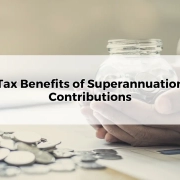How to Make Non-Concessional Contributions to Super
Table of Contents
ToggleSuperannuation is a vital component of retirement planning in Australia, providing a tax-effective way to save for your future. Non-concessional contributions, in particular, offer a powerful method to boost your superannuation balance. Understanding how to make these contributions can significantly enhance your financial security in retirement.
Understanding Non-Concessional Contributions
Non-concessional contributions are made from after-tax income, meaning they do not attract a tax deduction. Unlike concessional contributions, which are taxed at a concessional rate of 15%, non-concessional contributions are not subject to additional contributions tax, making them an attractive option for those looking to maximise their superannuation savings.
Eligibility Criteria
To make non-concessional contributions, you must meet specific eligibility criteria. Generally, individuals under the age of 67 can make these contributions without restriction. For those aged 67 to 74, work test requirements must be met. Additionally, there are annual contribution caps to consider, with the current cap set at $120,000 for financial year 2024-25.
Advantages of Non-Concessional Contributions
One of the primary benefits of non-concessional contributions is the potential for significant tax advantages. Since these contributions are made from after-tax income, they do not incur additional tax upon entry into your super fund. Moreover, the earnings on these contributions within the fund are taxed at the concessional rate, which is typically lower than most individuals’ marginal tax rates. This can lead to substantial savings and a larger retirement nest egg.
Steps to Make Non-Concessional Contributions
Making non-concessional contributions involves several steps. First, assess your financial situation to determine how much you can afford to contribute. Next, choose the right superannuation fund that aligns with your investment strategy and goals. Ensure that your fund accepts non-concessional contributions and that you are aware of any fees or charges associated with making these contributions.
Making the Contribution
When making your contribution, you can choose from various payment methods, including direct deposit, BPAY, or cheque. It’s essential to check with your super fund for specific instructions and details on how to make the payment. Timing is also crucial; contributions must be made within the financial year to count towards that year’s cap.
Ensuring Proper Documentation
Before making specific types of non-concessional contributions, such as retirement/CGT contributions or downsizer contributions, it’s crucial to submit the appropriate forms to your super fund. Proper documentation ensures that your contributions are accepted and classified correctly, avoiding any potential issues or delays.
Retirement/CGT Contributions
If you are making contributions related to the sale of a small business and wish to utilise the CGT (Capital Gains Tax) exemption, you must complete and submit the “Capital Gains Tax Cap Election” form. This form ensures that the contribution is recognised under the CGT cap, which is separate from the non-concessional contributions cap.
Downsizer Contributions
For individuals aged 65 or older who are making a downsizer contribution from the proceeds of selling their primary residence, the “Downsizer Contribution into Superannuation” form must be submitted to your super fund. This form ensures that the contribution is accepted under the downsizer contribution rules, allowing you to contribute up to $300,000 (or $600,000 per couple) without affecting your non-concessional contributions cap.
Strategies for Maximising Non-Concessional Contributions
To maximise the benefits of non-concessional contributions, consider utilising the bring-forward rule. This rule allows individuals under the age of 75 to bring forward up to three years’ worth of contributions, effectively allowing a contribution of up to $360,000 in a single year. Combining non-concessional contributions with concessional contributions can also provide a balanced approach to building your superannuation savings.
Potential Pitfalls and How to Avoid Them
While non-concessional contributions offer many benefits, there are potential pitfalls to avoid. Exceeding the contribution caps can result in additional taxes and penalties, diminishing the benefits. It’s crucial to monitor your total super balance, as the ability to make non-concessional contributions is limited for those with balances over $1.7 million.
Case Studies of Successful Non-Concessional Contributions
Real-life examples can illustrate the effectiveness of non-concessional contribution strategies. For instance, consider an individual who uses the bring-forward rule to contribute $300,000 at age 60. By investing wisely within their super fund, they can take advantage of the concessional tax rates on earnings, significantly boosting their retirement savings over the next decade. Lessons from these case studies highlight the importance of timing, strategic planning, and ongoing management of superannuation contributions.
Case Study: Compounding Growth on Non-Concessional Contributions
Let’s delve deeper into this scenario with some calculations. Assume our individual, John, contributes $300,000 to his superannuation fund at age 60. He chooses a balanced investment strategy within his super fund, which yields an average annual return of 7%, compounded annually. Over a period of 10 years, the power of compounding significantly enhances the value of his contribution.
Year-by-Year Growth Calculation:
- Year 1:
- Initial Contribution: $300,000
- End of Year Balance: $300,000 * (1 + 0.07) = $321,000
- Year 2:
- Start of Year Balance: $321,000
- End of Year Balance: $321,000 * (1 + 0.07) = $343,470
- Year 3:
- Start of Year Balance: $343,470
- End of Year Balance: $343,470 * (1 + 0.07) = $367,512.90
- Year 4:
- Start of Year Balance: $367,512.90
- End of Year Balance: $367,512.90 * (1 + 0.07) = $393,238.80
- Year 5:
- Start of Year Balance: $393,238.80
- End of Year Balance: $393,238.80 * (1 + 0.07) = $420,766.51
- Year 6:
- Start of Year Balance: $420,766.51
- End of Year Balance: $420,766.51 * (1 + 0.07) = $450,220.16
- Year 7:
- Start of Year Balance: $450,220.16
- End of Year Balance: $450,220.16 * (1 + 0.07) = $481,735.77
- Year 8:
- Start of Year Balance: $481,735.77
- End of Year Balance: $481,735.77 * (1 + 0.07) = $515,456.28
- Year 9:
- Start of Year Balance: $515,456.28
- End of Year Balance: $515,456.28 * (1 + 0.07) = $551,528.22
- Year 10:
- Start of Year Balance: $551,528.22
- End of Year Balance: $551,528.22 * (1 + 0.07) = $590,135.19
At the end of 10 years, John’s initial $300,000 contribution has grown to approximately $590,135.19, nearly doubling in value due to the compounding effect of a 7% annual return. This growth demonstrates the power of compounding and the importance of making substantial contributions early to maximise retirement savings.
Benefits of Compounding Growth:
- Tax Efficiency: Within the superannuation environment, investment earnings are typically taxed at a concessional rate of 15%, which is generally lower than an individual’s marginal tax rate. This tax efficiency further enhances the growth potential of the contributions.
- Inflation Protection: Compounding returns help to protect against inflation by ensuring that the investment grows at a rate that outpaces the erosion of purchasing power over time.
- Financial Security: The significant growth of the investment provides a robust financial cushion, ensuring greater financial security and stability in retirement.
Key Takeaways from the Case Study:
- Early Contributions: Making substantial contributions early can significantly benefit from the power of compounding, leading to impressive growth over time.
- Strategic Planning: A well-thought-out investment strategy within the super fund is crucial for maximising returns and achieving long-term financial goals.
- Ongoing Management: Regularly reviewing and adjusting the investment strategy can help maintain optimal growth and adapt to changing market conditions and personal circumstances.
By understanding and applying these principles, individuals can effectively use non-concessional contributions to enhance their superannuation savings and secure a comfortable retirement. Engaging with a professional financial adviser can provide tailored advice and strategies, ensuring that your superannuation plan aligns with your financial goals and maximises the benefits of compounding growth.
Seeking Professional Advice
Navigating the complexities of superannuation contributions can be challenging. Engaging a professional financial adviser can provide invaluable insights and tailored strategies to optimise your contributions. When choosing an adviser, look for experience, credentials, and a clear understanding of superannuation regulations and benefits.
Conclusion
Non-concessional contributions to superannuation present a powerful opportunity to enhance your retirement savings. By understanding the rules, benefits, and strategies associated with these contributions, you can make informed decisions that significantly improve your financial security in retirement. Take action today to explore how non-concessional contributions can fit into your overall financial plan and set yourself up for a prosperous retirement.









